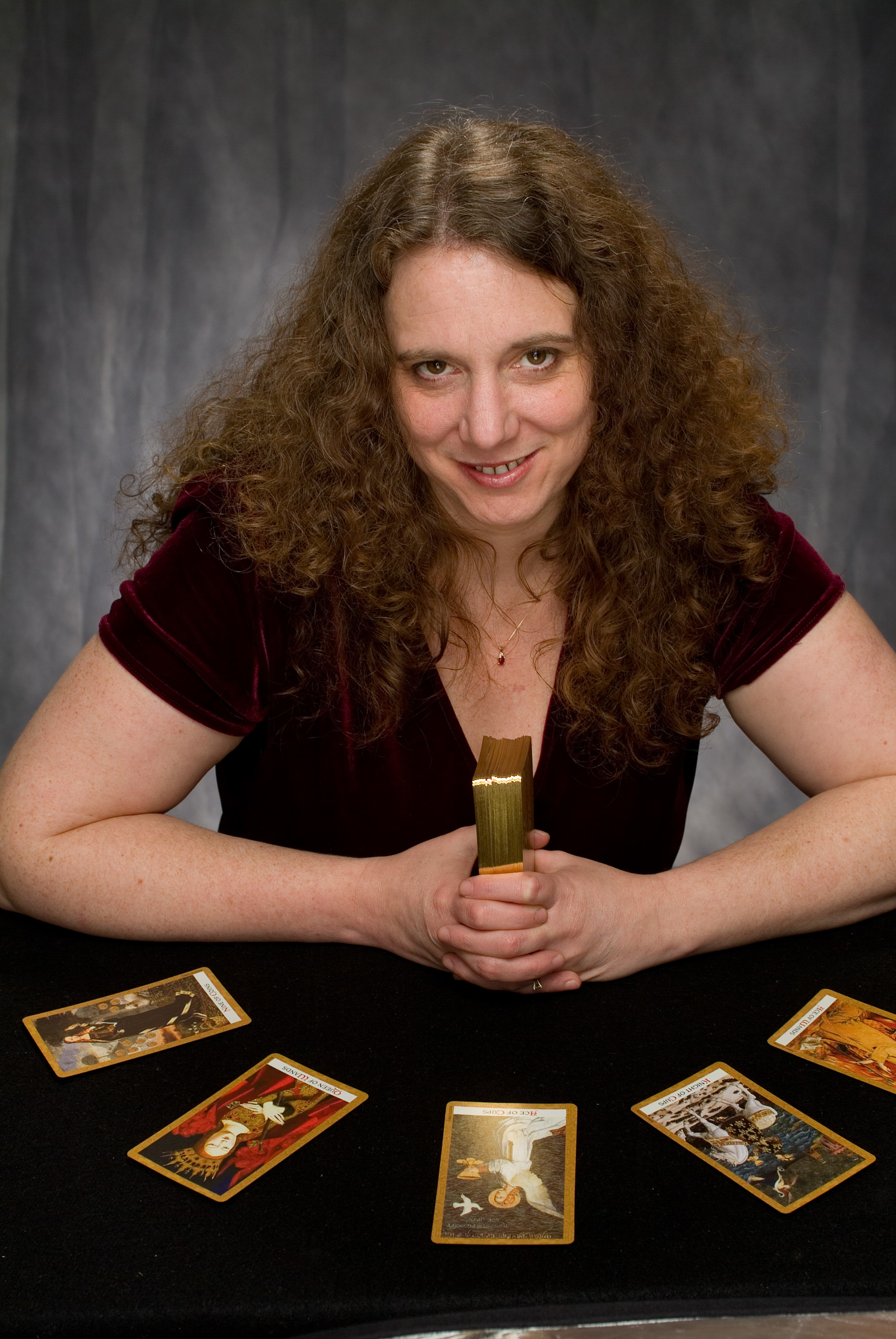
Welcome to my personal blog.
Here you will find my musings, thoughts and observations, all inspired by my experiences as a full-time professional tarot reader.
Tarot Facts in Fifteen Minutes
This past Sunday, I was honored to be a presenter at the “Something for Everyone” Library Open House at the Jimmie B. Keel Regional Library. I, along with experts on a variety of topics, presented a fifteen minute talk. My talk was entitled, “The History of the Tarot.”
Just how much can you say about tarot in fifteen minutes? Actually, quite a lot.
Here’s some of what I covered.
- Tarot is the name given to a deck of 78 playing cards. Tarot has a specific structure, which includes two sections; a Major Arcana of twenty-two trumps and a Minor Arcana of four suits. Each suit has pips ace through ten and a court of four characters.
- The word “arcana” means “secrets”.
- Tarot originated in Italy in the 1400s as a trump-taking game created to commemorate important events.
- Tarot become the inspiration for poetry, called “tarocchi appropriati”.
- In the 1500s the trump-taking game of tarot included each player being assigned a trump. The assigner would have to delicately explain why the particular trump fit the player’s personality. This explanation as given in the form of a poem.
- The first written record of tarot as divination comes from the book written in the 1700s by Jean-Baptiste Alliette, known as “Etteilla.”
- In the late 18th century a small group of Freemasons and Rosicrucians formed the Hermetic Order of the Golden Dawn in England. Golden Dawn members included William Butler Yeats, and two men who became the designers of the world’s most popular tarot decks, A.E. Waite and Aleister Crowley.
- In the early 1970s, with the help of tarot authors Eden Gray and Mary K. Greer, tarot became a mainstay in popular western culture.
- Now, tarot is popular world-wide.
- Today, there are literally thousands of different tarot decks available.
- There has been a great effort to create new tarot decks that are inclusive. This effort acknowledges that tarot’s medieval origins inherently create a measure of patriarchy, classism, sexism and racism within the early images.
- Tarot is of interest to historians, artists, collectors, psychologists, writers, diviners and spiritual seekers.
- Tarot inspires popular movies, like “The Red Violin.”
- Tarot archetypes, like “Father Time,” remain prevalent in our culture.
- Tarot, as a unique art form, is inspiring to artists and contemporary fashion designers, including Dolce & Gabanna and Versace.
- Tarot is not the only type of card oracle. There are many other oracle decks, included another structured deck used specifically for fortune-telling, the Lenormand cards.
- Tarot enthusiasts see correlations between tarot and many esoteric systems, including astrology, Kabbalah, numerology and the Four Elements. There is no historical evidence that these correlations were intended by the original designers of tarot.
- In recent years, other interesting correlations have been discovered, including a correlation between the sixteen Court cards and the Myers-Briggs personality types.
- That these correlations exist is a topic of study and discussion for tarot enthusiasts, and influences card interpretations in tarot divination.
- Today, tarot cards are used as creative prompts in improvisational theatre and creative writing.
- Tarot decks are often designed by CCG (collectible card game) and fantasy artists.
- Tarot is often seen as telling the archetypal epic journey of the hero. Each card represents a universal experience, character, theme or lesson; which we experience on our own ‘hero’s journey” though life.
If you had only fifteen minutes to talk about 500 years of tarot, what would you say?

